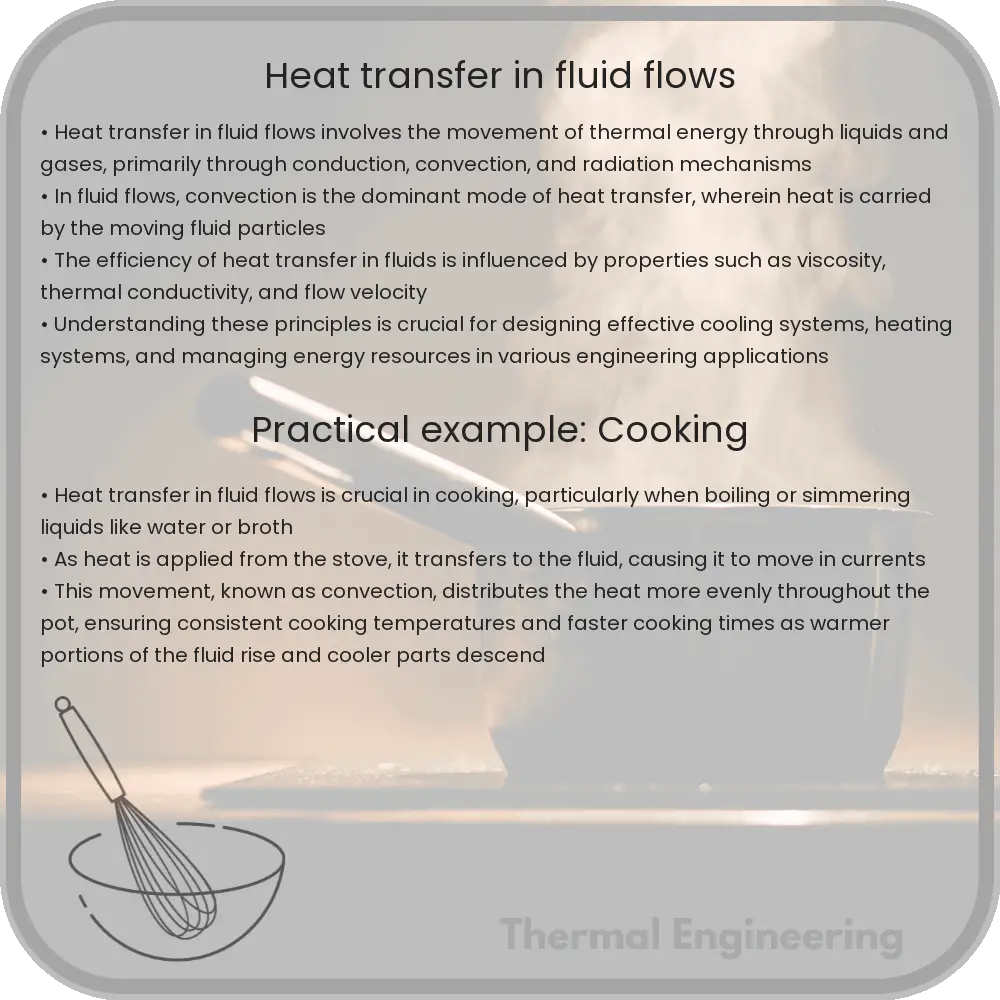Learn about heat transfer in fluid flows, its modes, and its critical role in engineering systems like HVAC and aerospace.

Understanding Heat Transfer in Fluid Flows
Heat transfer in fluid flows is a fundamental concept in engineering that influences various applications, from industrial processes to everyday appliances. This happens throughout systems where fluids—such as gases or liquids—are used to transfer energy. Understanding this concept is crucial for designing efficient systems in automotive, aerospace, HVAC (heating, ventilation, and air conditioning), and many other fields.
Three Modes of Heat Transfer
Heat transfer occurs in three primary modes: conduction, convection, and radiation. In the context of fluid flows, convection is the most relevant mode.
- Conduction – Direct heat transfer through material without the movement of the substance itself.
- Convection – Heat transfer due to the motion of fluid. This can be either natural or forced convection, depending on whether the fluid motion is generated by external means (like a pump or fan) or by buoyant forces arising from density differences caused by temperature variations in the fluid.
- Radiation – Transfer of energy through electromagnetic waves, which does not require a medium.
Convection in Fluid Flows
Convection is split into two further categories:
- Natural convection occurs when fluid motion is caused by buoyancy forces that are due to density variations in the fluid with temperature. For instance, warm air rises because it is less dense than cooler air.
- Forced convection involves fluid motion driven by external sources, like pumps or fans. Examples of this can be seen in water cooling systems in nuclear reactors or forced air systems in home heating.
The Governing Equation
The rate of convective heat transfer can be described by Newton’s law of cooling:
\[
q = h * A * (T_{\text{fluid}} – T_{\text{surface}})
\]
Where:
- \(q\) represents the heat transfer rate in watts,
- \(h\) is the heat transfer coefficient in watts per square meter Kelvin,
- \(A\) refers to the heat transfer area in square meters,
- \(T_{\text{fluid}}\) is the temperature of the fluid, and
- \(T_{\text{surface}}\) is the temperature of the surface in contact with the fluid.
Factors Influencing Heat Transfer in Fluids
Several factors impact the efficiency of heat transfer in fluid flows:
- Temperature difference – Greater temperature differences can enhance the heat transfer rate.
- Fluid velocity – Higher velocities generally increase the heat transfer rate by minimizing the thickness of the thermal boundary layer, a layer of fluid that is significantly affected by the thermal energy of the surface.
- Thermal properties – These include thermal conductivity, specific heat capacity, and density of the fluid. Each of these properties can affect how effectively a fluid can carry and transfer heat.
- Surface area – Larger surface areas allow for more extensive contact with the fluid, hence enabling higher rates of heat transfer.
- Type of fluid flow – Laminar flows, which are smooth and orderly, tend to transfer heat less effectively compared to turbulent flows, which are chaotic and mixed.
Applications in Engineering
Understanding heat transfer in fluid flows enables engineers to design more effective systems across a variety of fields. For example:
- Automotive engineers design cooling systems to manage engine temperature.
- Aerospace engineers work on thermal management systems to protect spacecraft from extreme temperatures.
- Environmental engineers might develop water circulation systems for natural bodies of water to manage ecosystems.
In conclusion, mastering the dynamics of heat transfer in fluid flows is essential for engineering efficient and effective systems in multiple industrial applications. The principles discussed provide foundational knowledge that helps engineers make informed decisions in their respective fields.